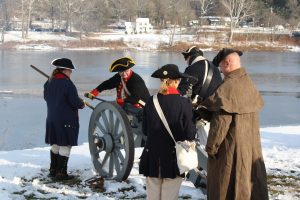
By Katie Meyer | PA Post

The agency that oversees Pennsylvania’s state parks has released the preliminary version of a plan meant to govern the system for the next 25 years.
It notes while park infrastructure is getting older and more dilapidated, state funding has grown proportionally smaller.
The Pennsylvania Department of Conservation and Natural Resources (DCNR) put together its preliminary report after two years of public surveys. Respondents, the department said, overwhelmingly want to maintain the 121 state parks, and think they should remain quiet, natural, and wild.
But DCNR spokesman Terry Brady noted, it’s getting harder to maintain nearly 30 thousand acres and infrastructure—like dams.
“So many of our state parks, the recreational draw hinges on the lake, and the lake hinges on a dam sometimes that’s 50, 60, 70 years old,” he said.
Right now, parks get about 50 percent of their total budget from the state. The rest is made up with things like user fees and revenue from leasing land to oil and gas companies.
Twenty-five years ago, the price tag for repair projects was around $100 million dollars.
Now it’s five times that.
“The condition of state park facilities is deteriorating, with some facilities being shuttered, and some recreation activities no longer available—while demand for park use is higher than ever before,” the report’s authors wrote.
DCNR also noted, park management staff should also be about ten times bigger.
“As the state park system grew in number of parks and acreage from the 1970s to the present, the Bureau’s staff complement decreased,” the department wrote. “The result has been a decrease in the ability of staff to adequately maintain physical infrastructure…manage natural and cultural resources and address numerous environmental challenges.”
The report lists some revenue options beyond increased state funding—including looking for federal grants and tearing down dilapidated buildings.
It also says DCNR aims to protect native habitats more aggressively, take measures to minimize stormwater contamination and the effects of climate change, and shift to greener building design and energy generation—for instance, installing new solar panels.
A period of public discussion and comment on the report is now beginning, before the final version is released next summer.
Delaware Canal State Park runs 60 miles and through Upper Makefield, which is also home to the majority of Washington Crossing State Park. Tyler State Park sits on 1,700 acres in Newtown, Northampton and Wrightstown townships.

PA Post is a digital-first, citizen-focused news organization that connects Pennsylvanians with accountability and deep-dive reporting.








